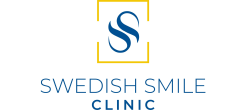EXTRA PRECAUTIONARY MEASURES AGAINST COVID-19
Patient screening
Patient screening is likely to be with us for a while. The first step is identifying suspected cases of COVID-19. We should also measure the temperature of the patient. It is advised that a contact-free forehead thermometer is used for this.
- Do you have a fever or have you experienced a fever within the past 14 days?
- Have you experienced a recent onset of respiratory problems, such as a cough or difficulty in breathing, within the past 14 days?
- Have you come into contact with a patient with confirmed 2019-nCoV infection within the past 14 days?
- And have you come into contact with people who come from areas with recent documented fever or respiratory problems within the past 14 days?
- Are there at least two people with documented experience of fever or respiratory problems within the last 14 days, having had close contact with you?
- Have you recently participated in any gathering, meetings, or had close contact with many unacquainted people?
After the screening questionnaire:
- If the patient replies yes to any of the screening questions, and his or her body temperature is below 37.3°C, postpone the treatment until 14 days after the exposure event
- If the patient replies yes to any of the screening questions, and his or her body temperature is 37.3°C or higher, postpone treatment and follow advice on the current guidelines for isolation
- However, if the patient replies no to all the screening questions, and his or her body temperature is below 37.3°C, treatment should be permitted
- Finally, if the patient replies no to all the screening questions, but his or her body temperature is 37.3°C or higher, the patient should be directed for further medical care
Practice environment

For the foreseeable future, it is unlikely we will see a waiting room full of patients. The guidelines are likely to involve social distancing measures of at least two metres from patients and reception staff and other patients or a one-in one-out protocol.

Reception screens may be an option, similar to recent measurements taken at several supermarkets. Hand sanitiser should be available to all.
Clean Air
Dental practices may struggle with ventilation management, especially if they are situated within confined spaces. There is quite strong evidence that good ventilation can impact on the spread of airborne infection.
Various studies have shown that air cleaning systems do reduce the amount of aerosol created during dental procedures such as ultrasonic use, tooth preparations and extractions.
Our practice has invested in VK401. Each surgery at Swedish Smile Clinic is supplied by a Virus Killer unit.
It’s a reliable air purifier and steriliser for medium to large rooms. Combining pre filter, HEPA filter, activated carbon and the reactor cell of 8 super UVC lamps with 40 TiO2 hexagon filters makes it the ultimate solution for spaces up to 60 square meters.
Pre-procedural rinse
A recent paper stated that rinsing with 1.5% peroxide for 60 seconds reduces viral load and disinfects the throat. Peroxide drops coronavirus replication by >4 logs. In practice, Peroxyl is a peroxide-based mouthwash that we use routinely.
Other studies have shown the use of anti microbial rinses for 60 seconds significantly reduces the level of oral microorganisms in the aerosols generated during routine dental procedures.
Personal protective equipment (PPE)
Surgical mask
These are the ones we use routinely in dentistry and were readily available prior to the COVID-19 crisis at a reasonable price. They have a waterproof outer aspect and protect the wearer from splatter and large droplets. They do not protect against airborne infectious agents such as coronavirus.
However, at the very least, if a surgical mask is worn by a contagious person, then this mask will stop the spread to his or her immediate surrounding area.
Respirators
These are masks that prevent the wearer from inhaling aerosols, gases and vapours that are potentially harmful. These may protect the wearer from airborne infectious agents such as coronavirus if fitted properly.
Face shields
Face shields should not be used alone as a form of PPE. But their use makes complete sense when dealing with aerosol and splatter coupled with appropriate face masks.
Gowns
Donning and removal
For removal, gloves are firstly removed, followed by the apron or gown, eye protection and finally mask or respirator. Hand hygiene should immediately follow removal of PPE
High volume aspiration (HVA)
In most practices, we use high volume aspiration (HVA) routinely. A recommended diameter size of 8mm and greater is advised to remove high volumes of air and up to 90% of aerosol.
With regards to hygiene procedures, it is likely that assistants will need to adequately manoeuvre the HVA.
General information:
COVID -19 Risk Assesment for Swedish Smile Clinic
COVID -19 Recovery Plan for Swedish Smile Clinic
COVID – 19 SOP for Swedish Smile Clinic
Website Last Updated: June 12, 2020
